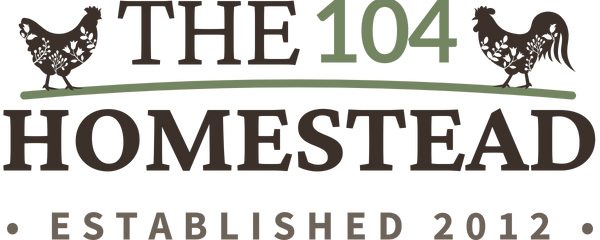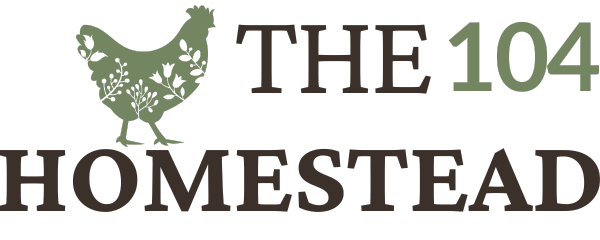A Homestead Guide to Meat Rabbit Breeding Stock Selection
Find out how to pick the best breeding stock for meat rabbits. Boost your homestead’s output with this guide on selecting the best rabbits.
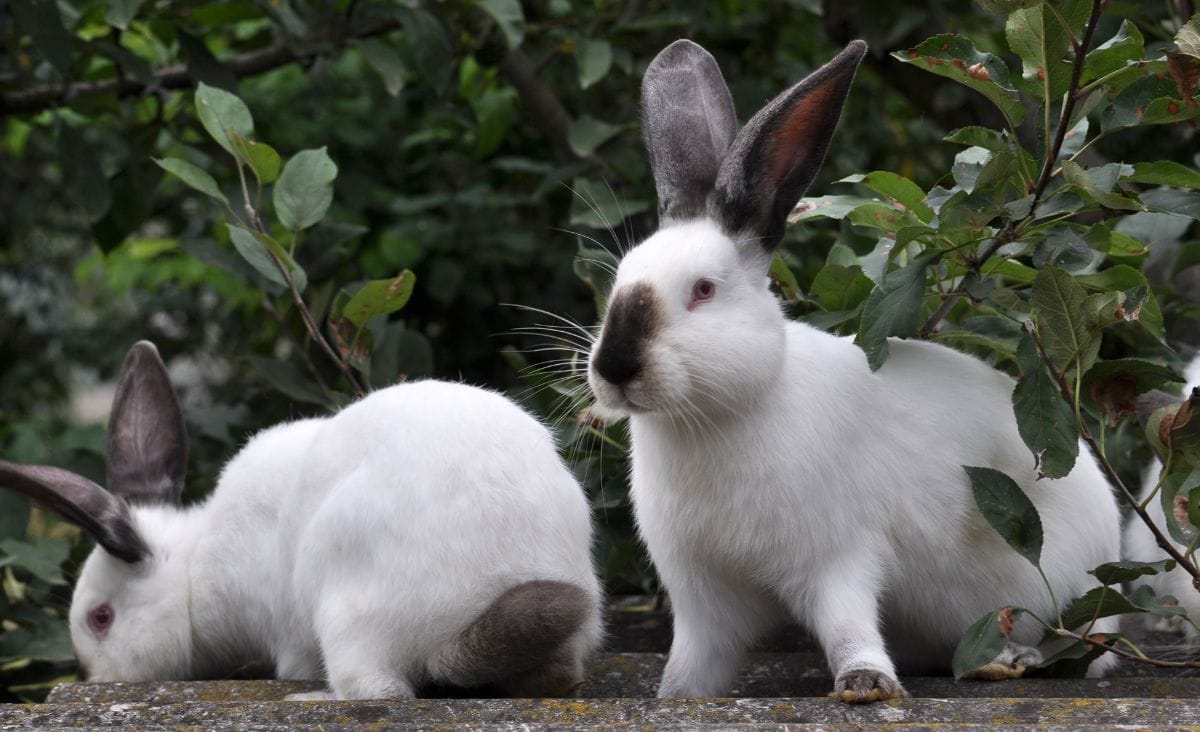
Have you been considering getting some rabbits? There are many reasons why rabbits are a good addition to your homestead. Today we’re talking about ones raised for meat. Any rabbit can be eaten, no matter how cute, hairy, or small, but some are a lot more practical for producing meat. You don’t have to buy purebred or pedigreed stock to start breeding meat rabbits; you just need to know what to ask the breeder, what to avoid, and what makes a good meat rabbit.
A sustainable and effective way to get high-quality protein for your homestead is to raise meat rabbits. But the quality of your breeding stock has a lot to do with how well your rabbitry does. It is not enough to just look at the rabbits’ size or breed; you also need to know about their genes, health, and personality to make sure the colony is productive and healthy. This post goes into detail about how to choose the best breeding stock so that you can make smart choices that will help your rabbitry succeed.
Questions to Ask
These are some questions you should be asking yourself and the breeder before you take the trip to pick up your rabbit(s).
Are you buying a just-weaned kit or an adult rabbit?
You’ll want to avoid buying rabbits before they are 8 weeks old, which is typically when they should be weaned. Rabbits that are weaned early often develop enteritis, a digestive disease, and sometimes die. Despite an increased risk of enteritis, kits that are destined for the freezer—often called grow-outs—are sometimes weaned early.
When you’re buying breeding stock, you want them to have stayed with the mother for the full 8 weeks so they get the best start in life. It’s also hard to properly assess a kit’s conformation if they are younger than 8 weeks, which is something you’ll want to do when buying breeding stock, and we will talk about it in a few minutes.
If you’re buying a rabbit over six months old, you’ll also want to ask about its breeding history. Six months is the ideal age to start breeding for most breeds used for meat. Rabbits a year old or older, especially does, that have never been bred, are a gamble. Adult rabbits get fat easily, potentially preventing them from breeding.
Age and weight at weaning?
As we talked about, 8 weeks is the ideal weaning age; you want as close to 5 lbs at weaning as possible. 5 lbs in 8 weeks is really hard to get, but anything over 3 lbs is good.
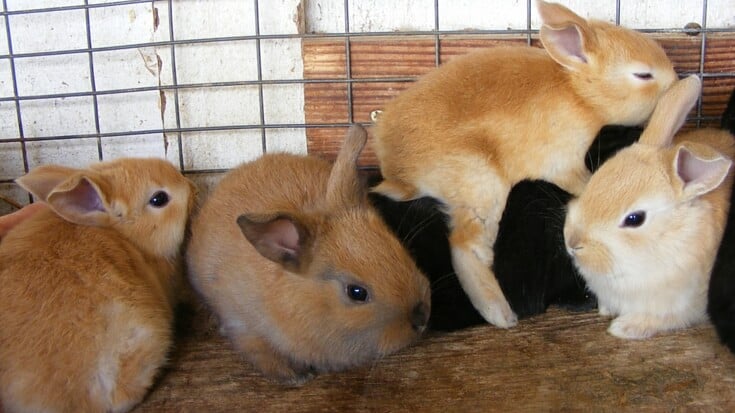
Average litter size, survival percent, and weight at weaning?
Large litters, more than 8 kits, are usually smaller at 8 weeks but catch up quickly if well-fed. The number of kits born, the number that survive to wean, and their weight tell you how good of a mother they had. Starting out with breeding stock from lines with good mothering skills is really important. It doesn’t matter how big the rabbits are or how meaty they are if they die in the nest. It’s not unusual for a doe to reject some of her first litters. Often this is because of human error, but a doe that raised her first litter is superior because she is productive much sooner than a doe who needs multiple litters to figure things out.
It’s also good to ask about their breeding program. A quick cycle where a doe produces one litter after another with little rest will often result in progressively smaller litters. This shouldn’t necessarily count against a doe unless you plan to also do a quick-cycle breeding program.
The condensed version is: You want no less than six, preferably eight kits, consistently produced per litter, with at least six weaned weighing three or more pounds each.
What about the breed and pedigree?
Even with mixed breeds, knowing the breeds is helpful. For instance, mixes including dwarf breeds are best avoided because they often have very small litters with frequent stillbirths. On the other hand, Flemish Giants get large quickly but have a poor meat-to-bone ratio.
In the case of purebreds, you can research the breed to learn if it was developed for meat production. If you learn who the breeder was, you can find out if they selected their line for meat type.
The Housing of Breeding Stock Rabbits
Giving breeding animals the best housing is not just about making them comfortable; it is also about making an environment that encourages health, safety, and productivity. Explore how the living conditions at the breeder’s have a big effect on how well your rabbit breeding program works.
Do they use solid-bottomed or wire cages, or tractors?
Rabbits kept in wire cages develop sore hocks more often. This has to do with the fact that most cages have flooring that is not right for rabbits; alas, that is a topic for another day.
Theoretically, rabbits kept in wire cages are exposed to fewer diseases and parasites since their droppings fall out of the cage. Solid-bottomed cages, unless they are cleaned with a religious procedure, provide a place for potential diseases to breed and can cause urine scald. If the breeder tells you they use solid-bottomed cages, you will need to pay especially close attention to the cleanliness of the rabbitry. If the breeder says they use tractors, ask if they put their breeders and kits they sell live in tractors.
Pasturing rabbits is awesome, but it increases the risk of a rabbit contracting coccidiosis. Pasturing rabbits does not mean that they will get coccidiosis, but if it’s in the area, then the rabbits have a chance of getting it from the soil. So ask if the rabbits you’ll be looking at buying have been on pasture and if coccidiosis has shown up in their rabbitry.
Can you visit the rabbitry or have photos?
After a few sketchy experiences, I am very firm about visiting a rabbitry before buying breeding stock from it. There are only two ways I would do otherwise: if I could get a video or photos with a verifiable date and location, or if someone I knew who was experienced with rabbits and had cleanliness standards equal to mine okayed the breeder for me.
Rabbits from dirty rabbitries will at best seem healthy but have lung damage and react poorly to stressful situations such as going to a new home. They may develop a case of bloating or lose a significant amount of weight. In the worst case, they will have serious contagious diseases. When I say “dirty,” I mean there is an ammonia smell that burns your eyes and throat; the cages are caked in manure and hair; and there is standing urine on the floor. A rabbitry can have lots of manure and bedding and be perfectly fine if there’s enough bedding and ventilation to prevent ammonia buildup and if the cages are clean.
Looking at a Rabbit’s General Health
Before getting into specific traits, it is important to check out a potential breeding rabbit’s overall health. Basic signs of a rabbit’s health and breeding potential are its general look, behavior, and vitality.
Overall Condition and Personality
A healthy rabbit should have a clean, smooth coat and a clean nose, eyes, and ears. They should be interested in people opening their cages and moving around when pestered. You should just barely be able to feel their backbone, but a rabbit’s body should feel solid, not bony.
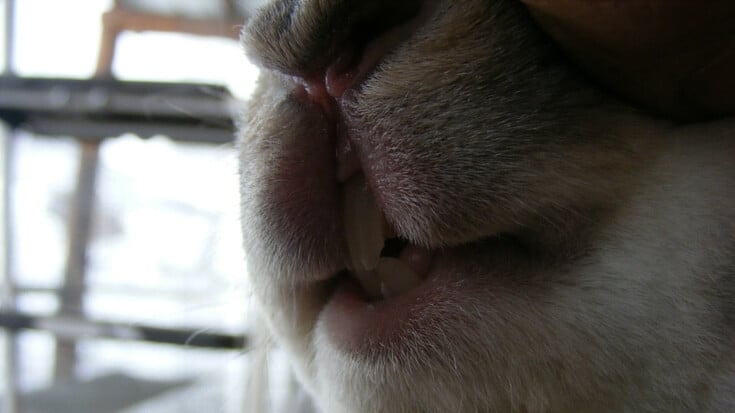
Evaluating Dental Health
A rabbit’s teeth should look like this photo. The top teeth should be in front. A rabbit’s teeth grow throughout their life and naturally wear down during chewing. If the bottom teeth are in front, they don’t wear down properly, and they eventually grow to a point that stops the rabbit from eating. This condition, called malocclusion, can be dealt with by clipping the teeth of pet animals, but a rabbit with incorrect teeth should never be used for breeding stock.
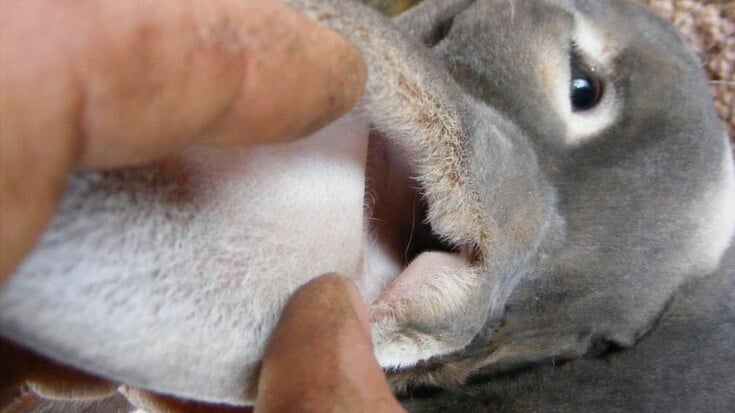
Ear Checks
The ear canal should be clean and have healthy skin. If it appears inflamed or bloody, as if the rabbit is scratching or scabby, don’t buy any rabbits there. Run away and sanitize yourself and anything you brought or were wearing while you were there. Scabby, inflamed ears are caused by ear mites, a different species from what affects dogs and cats.
Ear mites are highly contagious and potentially life-threatening. When I first got back into rabbits as an adult, ear mites were somehow introduced into my rabbitry. It took me two years to abandon all my wooden rabbit equipment to eliminate it.
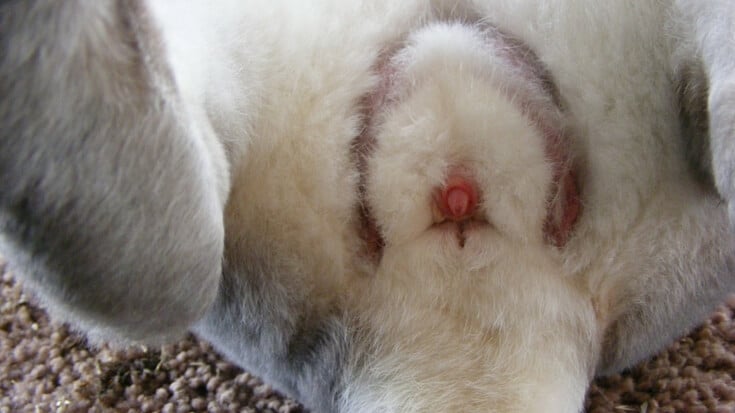
Reproductive Health
Bucks should have two testicles and a normal penis. Need I really say more? If he’s funny down there, just say no. There should be no pus, sores, or anything that makes you have flashbacks to high school sex-ed class.
Foot and Leg Assessment
Nails shouldn’t be excessively long. If a rabbit’s nails aren’t trimmed regularly, the quick grows out past what is normal and begins to twist. This is uncomfortable for the rabbit and increases the likelihood that it will break off a nail. Most importantly, though, overgrown nails cause a rabbit to change where they place weight on the foot, contributing to sore hock development.
Sore hocks happen when the fur is worn off the bottom of the foot. It can progress to sores developing and eventually into a bone infection, which can be deadly. A rabbit with sore hocks can be saved and healed completely, but it’s not something a beginner should really get themselves into.
Assess Breeding Stock Rabbits Conformation for Meat Quality
A meat rabbit is shaped like half a ball. From the side, their topline should make a smooth arch, and from the top, they should be ball-like. To assess a rabbit’s conformation, the front feet should be just below the eyes, with the elbow on the table and the toes of the back feet lined up with the round of the back leg.
This is for commercial and semi-compact rabbits. There are also cylinder-type meat rabbits, which are posed differently. I’m not familiar with those breeds, so I can’t give you any advice about assessing cylinder-type rabbits. Avoid rabbits that are small, bony, and racy; think like a jackrabbit; have shoulders that look low from the side and narrow from above.
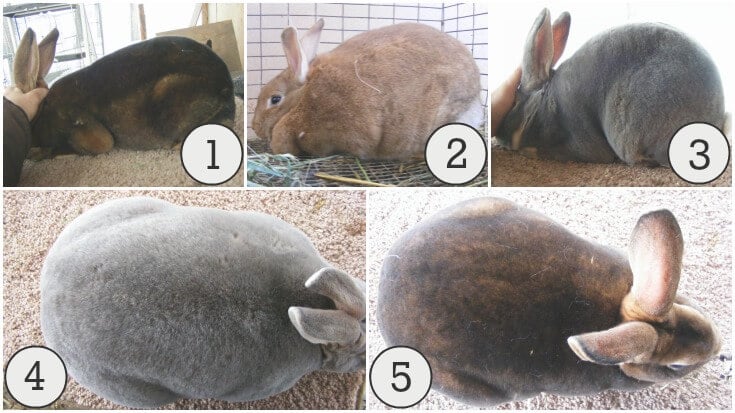
- Bad Side View: Notice that she isn’t very arched and that her shoulders are lower. You want to avoid this type.
- Good Side View: This girl is not friendly, so I get the best photos of her in the cage. Notice she also has a mostly smooth arch. She hasn’t been posed properly, but you can still see the arch.
- Good Side View: Notice that there’s a smooth arch from behind the ears to his tail. That’s what you want.
- Good Wide Top View: Notice that his hips are almost the same width as his shoulders. That’s good. He could be thicker through the middle, so he looked more like a ball, but Salix is nice.
- Bad Top View: Note that her shoulders are markedly narrower than her hips. Compare her to Salix, and you can really see the difference.
Frequently Asked Questions About Meat Rabbit Stock
If you’re new to rabbits, be sure to check out my post on feeding rabbits. It covers what their primary diet should include (or not include), plus healthy treats your rabbits will enjoy.
If you’ve found value in this blog post and enjoyed reading it, why not share it with your Pinterest community? Pin the image below and spread the love!
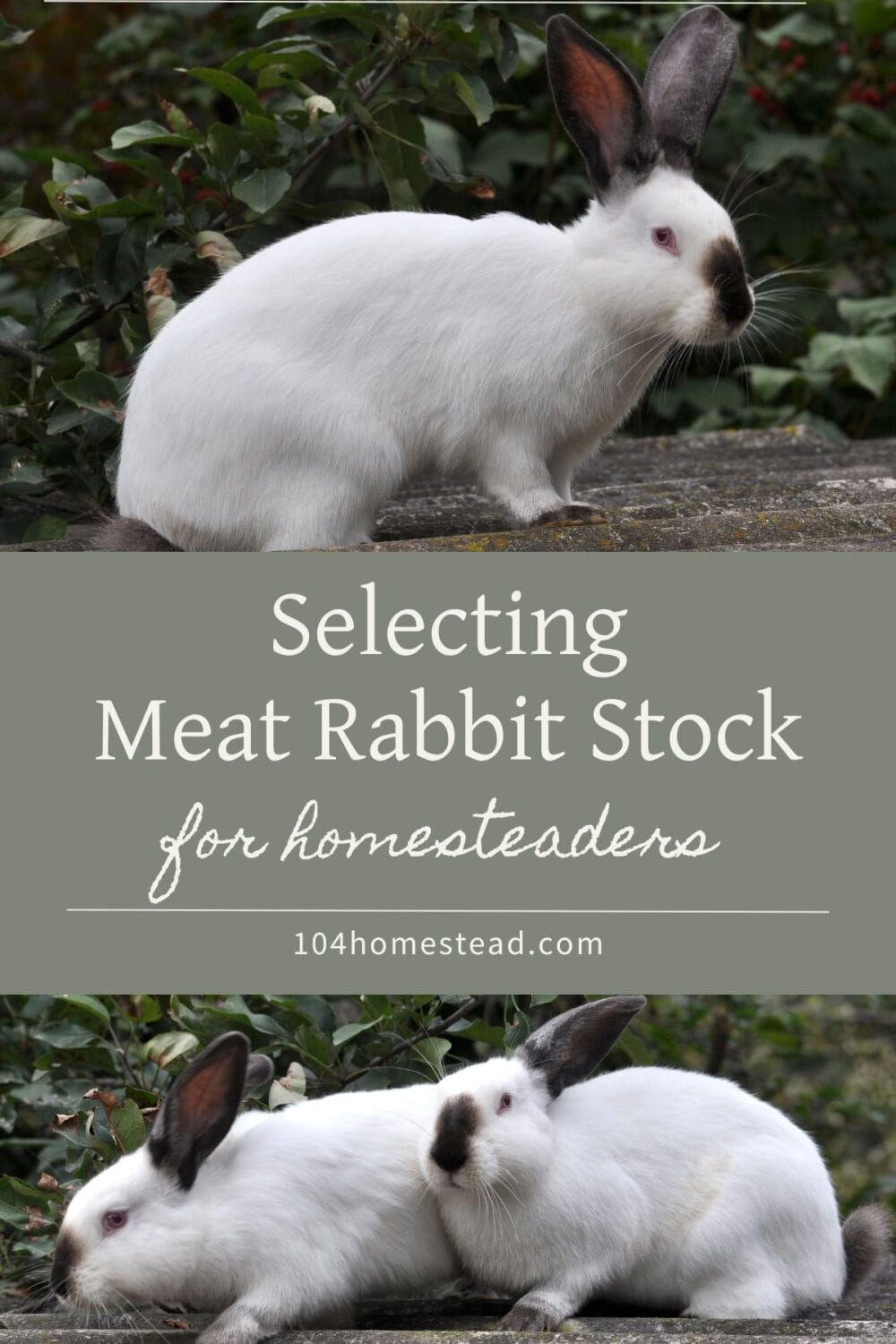
Assessing a rabbit’s conformation can get very detailed; it’s too much to get into here, and I’m sure your eyes would glaze over pretty fast!
So let’s review: In short, you are looking for a rabbit that is fast-growing, has good mothering skills, and is big, healthy, and roundish. Now that you’re ready to go find yourself breeding stock to start your meat rabbit adventure, good luck!
Have you been through the process of choosing breeding stock for your homestead? What challenges did you face, and what tips can you share with fellow homesteaders looking to start or improve their rabbitry?
